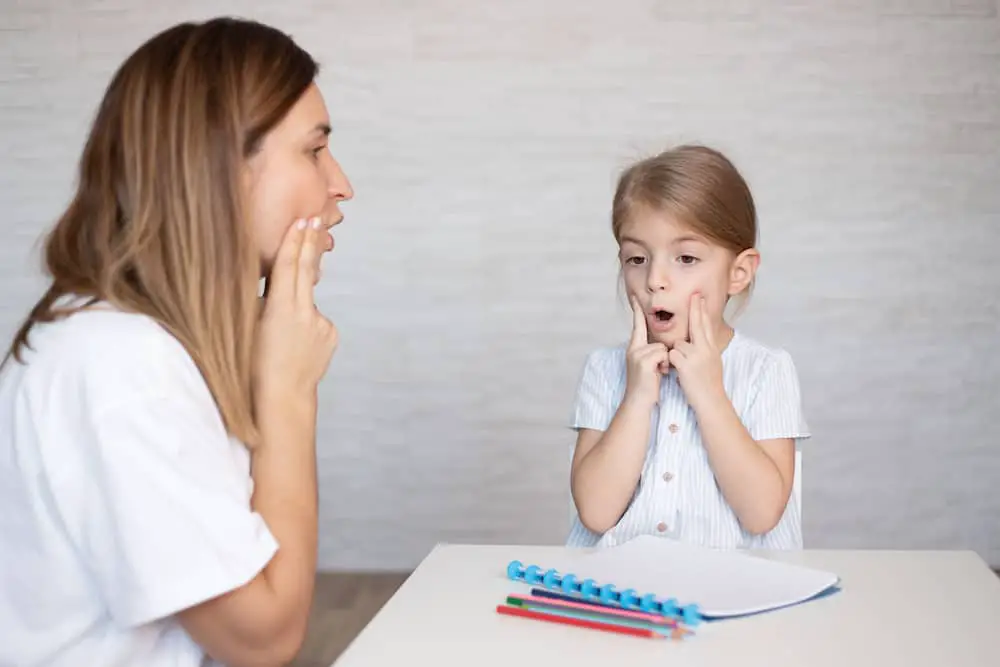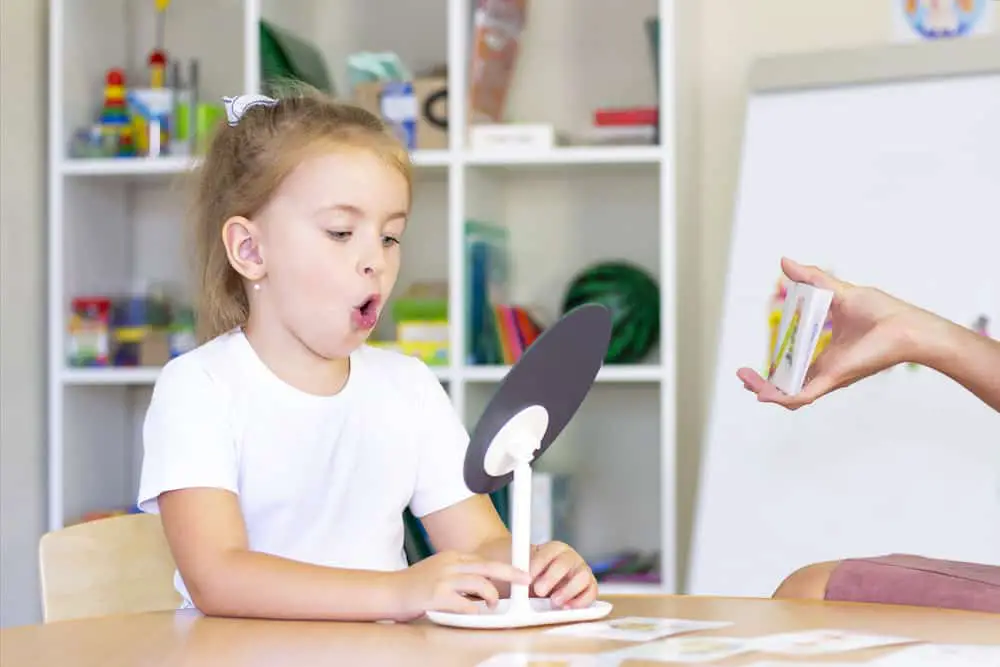Not being able to communicate with others or express the way you feel can be very frustrating.
If your child has trouble producing speech, we’re sure you’ll be keen to do everything you can to change the situation.
You may have been recommended PROMPT speech therapy to help develop language, but what is PROMPT therapy?
Today, we aim to address any questions you may have about PROMPT speech training, including what it is and whether it’s effective or not.
This way, you can decide whether PROMPT speech training is a suitable option for your child.
PROMPT Speech Therapy
PROMPT therapy is a holistic approach to problems with speech production and speech delay.
It tackles not only the physical facets of speech, such as motor control, but also the understanding and social aspects of communication.
This approach helps address a range of speech problems, including frequency disorders (like stuttering), language syntax, language formulation, motor control, and planning.
Children from the age of six months old can undergo this treatment with varying degrees of intensity to suit their needs.
What Is PROMPT in Speech Therapy?
PROMPT stands for Prompts for Restructuring Oral Muscular Phonetic Targets.
It is a specially designed program to help develop motor skills in the development of language for interaction.
How Does PROMPT Work?
PROMPT is quite literally a hands-on technique where the speech therapy pathologist will use touch prompts on your child’s face.
The prompts touch various parts of the face to help shape and support the proper movement of the vocal cords, lips, tongue, and jaw.
By guiding these language articulators, the speech pathologist can help the patient plan, organize, and produce different speech sounds.
As speech production develops, the touch prompts are then faded out.
Still, PROMPT-trained practitioners are not solely concerned with the physical characteristics of producing speech.
Rather, they provide a more holistic approach to children’s speech-sound delay.
Other aspects of a child’s development, including language development and social and emotional interaction, are also addressed.
After touch prompts, much of the therapy’s emphasis is on vocabulary and practical activities.
What Is the Difference Between a Cue and a Prompt?
When you give someone a cue, you’re essentially just giving them a clue to what the answer or solution might be.
A prompt is much more direct, making it a perfect name for this kind of therapy.
Is PROMPT Therapy Effective?
In short, yes, PROMPT therapy is effective.
In 2020, a study proved PROMPT is a significantly effective treatment for children with moderate to severe problems with speech.
The randomized control trial (RCT) was carried out by the Department of Speech-Language Pathology at the University of Toronto.
It was an extensive project that studied 49 participants across three clinical sites in Ontario.
Data was collected over a period of five years.
The children were randomly allocated either a) 10 weeks of PROMPT intervention, two x 45-minute sessions per week, or b) routine home training exercises.
Significant differences were recorded for motor control, articulation, and speech intelligibility, among others.
Key Findings
Key findings were presented at the American Speech-Language-Hearing Association’s Convention in Boston in 2018.
They include:
- Children with moderate to severe speech difficulties need direct speech therapy for meaningful change.
- Home training activities should be used in conjunction with direct speech therapy; only at-home training strategies are not as effective.
- You can expect clinically significant and meaningful improvements in your child’s speech after just 10 weeks of PROMPT training (20 sessions) in:
- Motor control – better accuracy in their ability to move, control, and coordinate movements needed for speech
- Sound production – they will be able to produce more sounds correctly after PROMPT intervention
- Intelligibility – they will be understood by unfamiliar listeners more often than previously
- Children with even the hardest-to-understand and treat speech can improve with PROMPT therapy.
- To make meaningful change in longer units of speech (sentence production), longer than 10 weeks of PROMPT is needed.
Although PROMPT intervention is most commonly used with children, there is a small amount of evidence to suggest that it can also be effective in adults.
If you or someone you know is suffering from apraxia or aphasia, PROMPT may be able to help.

What Are Speech Therapy Techniques I Can Use at Home?
Your child’s speech-language pathologist will be doing everything they can in the time allowed to help your child communicate more clearly.
However, there are also plenty of speech therapy techniques you can employ at home to help.
Ask your speech therapy practitioner for some techniques they recommend or try some we’ve listed below.
Sensory Feedback
Sensory feedback helps your child become more aware of the sounds they are making and how they are making them.
This would involve recording the sounds they make and playing them back to them.
You could also record how they should sound and play that to your child afterward.
That way, they can listen to both recordings and hear the differences.
Visual feedback could be achieved by asking your child to say certain words and phrases in front of the mirror.
Alternatively, they can watch you make sounds to see how the mouth, jaw, and tongue move when each sound is produced.
Articulation Activities
Play games with your child that encourage them to practice certain sounds.
For example, you could take it in turns to name words beginning with the “sh” sound before shooting a basketball hoop.
Oral Motor Therapy Techniques
Oral motor therapy techniques need to raise oral awareness.
You might experiment with food, trying different textures and temperatures, and then asking your child if they can identify how it feels.
Raise awareness of their mouth shape or jaw movement when making different sounds.
For example, how the lips look round when making the “sh” sound.
Progress With PROMPT
PROMPT speech therapy has proven to be an effective intervention in children with moderate to severe speech difficulties.
As a holistic approach to language development, a 10-week PROMPT course could potentially help your child articulate speech more clearly.
There are also various speech therapy techniques that you can practice with them at home.
Related: Picture Scenes Speech Therapy

